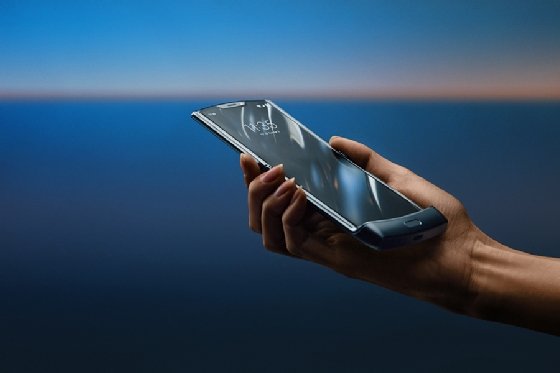
slasnyi - Fotolia
Evaluate the foldable mobile phone market for the enterprise
As more foldable mobile devices come to market, IT pros should familiarize themselves with the available models and evaluate if they're a worthwhile investment.
As more foldable mobile phones continue to hit the market, organizations should determine whether these devices can make their workers more productive.
The foldable mobile phone market is relatively immature and dynamic, and there are only a few models available. Further, many of the available devices have not reached the global market, and the models that have carry a significant price tag.
These factors leave organizations uncertain whether these smartphones are worth the investment. IT professionals and executives should familiarize themselves these five foldable devices that are now available across different markets to determine how much value these foldables can add.
Huawei Mate Xs
Huawei launched Mate Xs as the successor to foldable Mate X. Mate Xs has an 8-inch outward-foldable display and has Huawei's latest chipset, the Kirin 990 processor. This processor includes multiple Cortex cores and an integrated 5G modem. The Mate Xs display is based on the Falcon Wing design, a mechanical hinge that contains more than 100 interlocking parts. The Mate Xs also incorporates the 16-core Mali-G76 GPU, the most powerful GPU on Huawei mobile devices.
When folded, the phone runs a dual-screen display that includes a 6.6-inch main screen and a 6.4-inch secondary screen. In addition, it offers multiwindow capabilities that allow apps to interact with each other and users to multitask. The foldable mobile phone also includes a 4500-milliamp-hour (mAh) battery that can be charged from 0% to 85% in 30 minutes. The Mate Xs is currently sold in select markets, but Huawei plans to extend sales to the global market. However, it's unclear if Huawei will ever release its device in the United States. The price is roughly $2,746 in U.S. dollars.
Motorola Razr
Motorola Razr flip phones were highly popular prior to the rise of smartphones, but now the latest Motorola Razr is a foldable smartphone. When open, the Razr has a full-length 6.2-inch screen that relies on moveable metal support plates to pull the display tight. When closed, the phone features a 2.7-inch touch screen display on the outside of the device that provides quicker access to the most important information and tasks.

The Razr includes a Qualcomm Snapdragon 710 processor -- 2.2 GHz -- 128 GB of storage, a 2510-mAh battery, and other common smartphone features such as GPS, camera, gyroscope, fingerprint reader, accelerometer and magnetometer. Like its predecessors, Razr lets users hang up calls simply by closing the phone. This foldable mobile phone also includes the Moto Actions feature, which allows simple gestures to trigger customized tasks. Although the phone is wider than the original Razr, it is still highly portable, which is exactly what some users will want. The price of the Motorola Razr is $1,500.
Royole FlexPai
Royole FlexPai was the first foldable smartphone to hit the market, beating out Huawei and Samsung. The phone has a 7.8-inch outward-foldable display that can function as a single screen when open or split screens when closed. Royole claims that the display is extremely durable, withstanding over 200,000 bending tests. The FlexPai foldable mobile device has the Qualcomm Snapdragon 855 processor -- 2.84 GHz -- 128 GB of storage and a 3970-mAh battery. Organizations can also upgrade these devices to support 5G.
The FlexPai includes a unique feature that displays incoming call, text or email notifications along the smartphone's spine when it's folded, allowing users to continue to work in the main screens without interruption due to notifications. The phone also has two cameras and includes a dual view camera mode that makes an object visible on each screen when the phone is folded. Royole offers two models: Consumer and Developer. The Developer model is specifically designed for those building FlexPai applications. Currently, FlexPai is only sold in limited markets, and it is uncertain when it will be available to other markets. This foldable smartphone costs roughly $1,319.
Samsung Galaxy Fold
Samsung announced the availability of the Galaxy Fold smartphone back in Sept. 2019, making it one of the earliest entries in the foldable device market. The foldable mobile device includes a 7.3-inch internal-foldable display and an external 4.6-inch display. According to Samsung, users might notice a crease at the center of the internal display, which the vendor calls a natural characteristic. The device's spine is made up of a highly engineered hinge that has been tested for up to 200,000 folds. The Galaxy Fold includes the App Continuity feature, which lets users continue to run apps when they switch between screens. The smartphone also provides the Multi-Active Windows feature to support multitasking on each of the two screens.
The phone is built on a 7nm 64-bit Octa-Core processor -- 2.84 GHz -- and provides 512 GB of storage. Samsung offers an LTE model and 5G model depending on which country organizations purchase it in, which both come with dual batteries. Battery capacity for the LTE model is 4380 mAh, and battery capacity for the 5G model is 4235 mAh. Each model also includes specialized customer care services, and it comes with Samsung Knox real-time monitoring and protection and McAfee malware prevention. This foldable mobile device also offers the Secure Folder feature for protecting confidential data. The Galaxy Fold costs $1,980 for the LTE version.
Samsung Galaxy Z Flip
More recently, Samsung unveiled the Galaxy Z Flip, the vendor's latest attempt at a foldable mobile phone. Unlike its predecessor, the Galaxy Fold, this foldable mobile device has a similar design to the Razr, except with a 6.7-inch display. The display is made of ultra-thin glass rather than the typical polymers, and the hidden hinge uses nylon fibers that repel dirt and dust. The hinge also allows users to open the device at different angles. In addition, the phone provides a 1.1-inch cover display for viewing notifications.
To support multitasking, the Galaxy Z Flip includes the Flex Mode feature, which enables users to split the display into two 4-inch screens. Users also have access to the Multi-Window Tray feature, which allows users to open multiple app windows simultaneously. The phone includes a 7nm 64-bit Octa-Core processor -- 2.95 GHz -- 256 GB of storage and dual batteries that provide 3300-mAh capacity. The Galaxy Z Flip shares many of the same security features as Galaxy Fold, including Knox and McAfee services. This is the first device in Samsung's new Z series, and it carries a price of $1,380.
The future of foldable mobile phones
Foldable mobile devices come with fairly hefty price tags, so organizations must carefully evaluate whether these smartphones' benefits outweigh the costs. A foldable device may offer more display area, but that doesn't necessarily translate to greater productivity -- especially if users already have tablets, laptops or desktops at their disposal.
However, foldable smartphones might be useful for some workers because they support multitasking on different screens, which can help users work more efficiently. These devices can easily move from app to app, often with the ability to drag files and data from one app to the other. In addition, foldable devices could benefit users who don't have easy access to multiple devices, such field workers. With a foldable device, field workers still get the portability of their smartphones, but they also get additional display area when they need it.
In some cases, organizations should consider dual-screen phones instead of foldables. Dual-screen devices are easier for vendors to produce, so they cost less and don't come with as many issues as foldables. Dual-screen mobile devices have more proven track record than foldables and users can open these devices in either direction, providing more flexibility and often durability.
For most organizations, the choice between foldable smartphones and other types of mobile devices depends in large part on which devices can deliver the levels of productivity necessary to justify their costs. However, purchase decision-makers and IT pros should keep in mind that foldable technologies are still emerging. For that reason, it may be worth waiting until vendors have worked out some of the issues before considering the foldable option.






